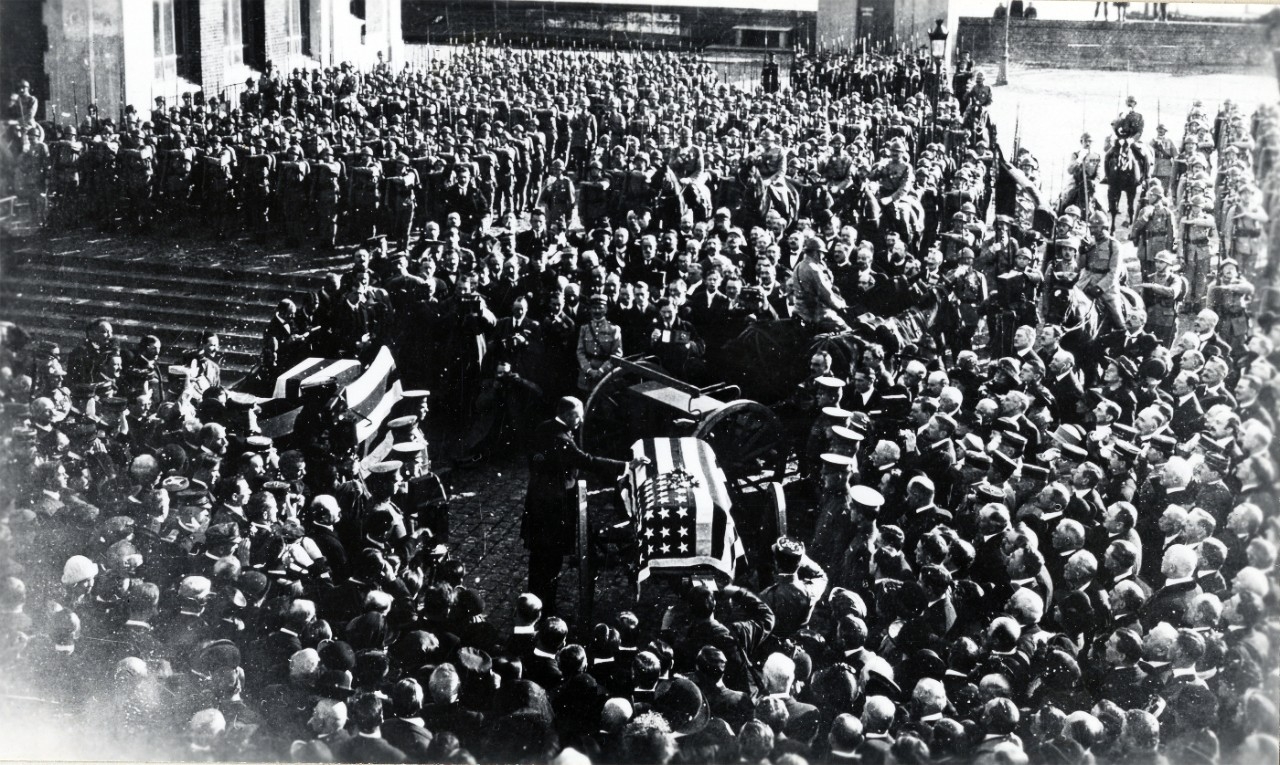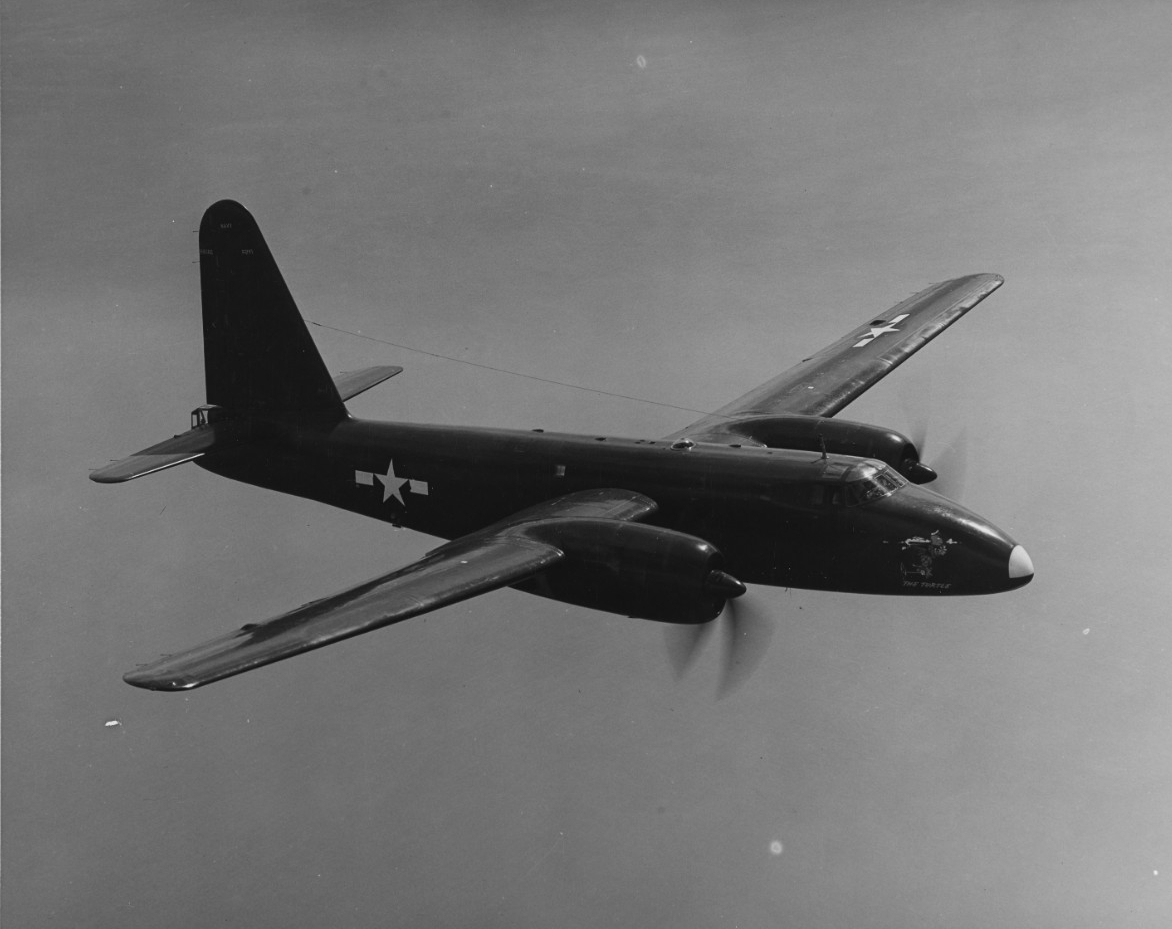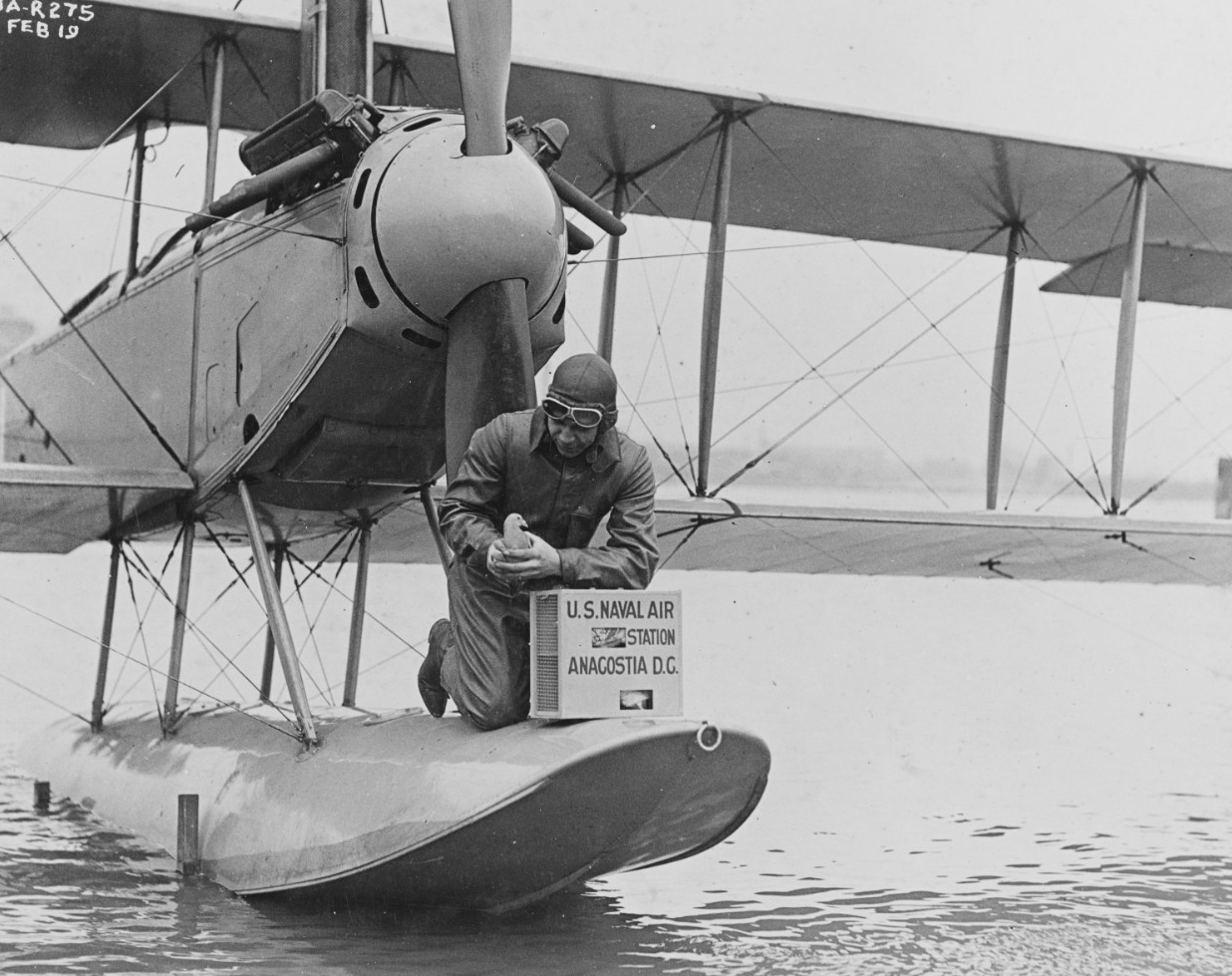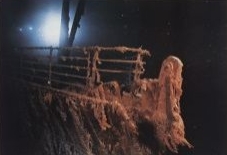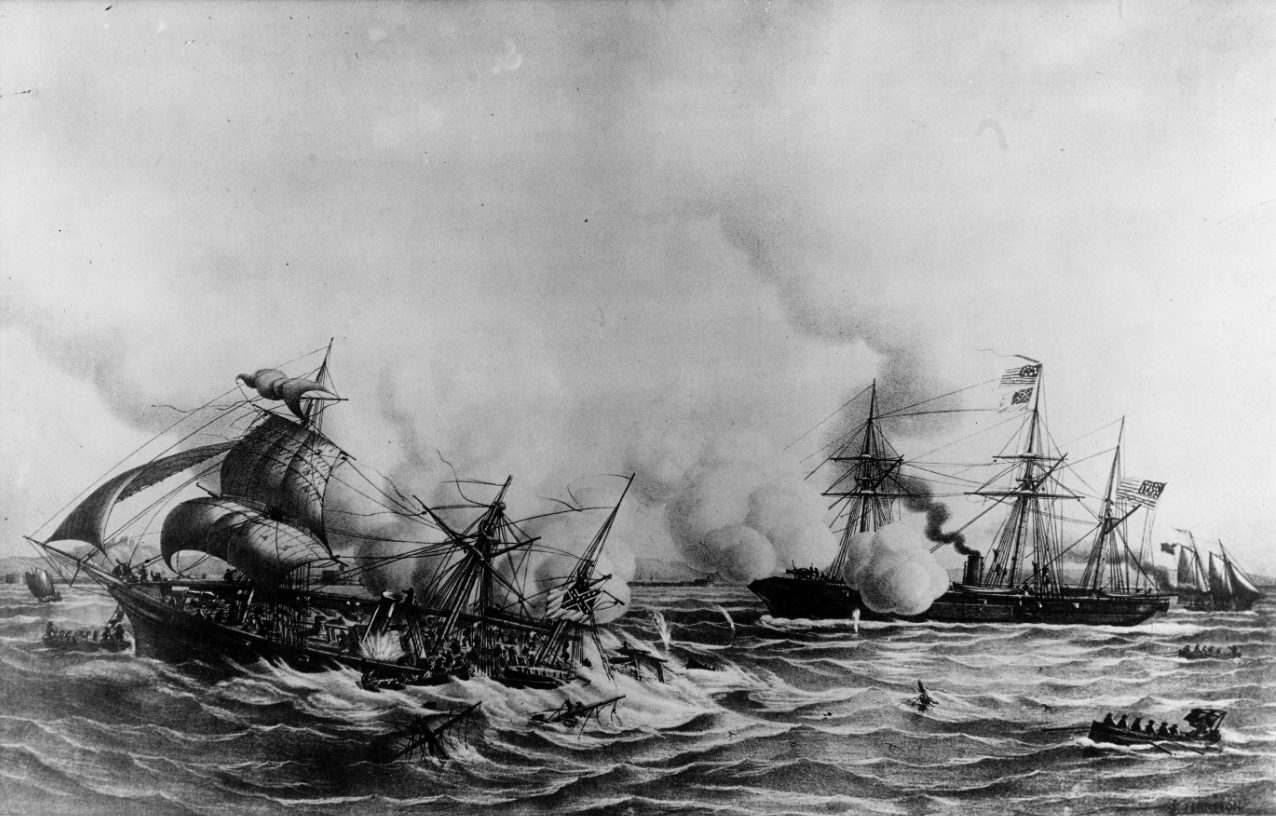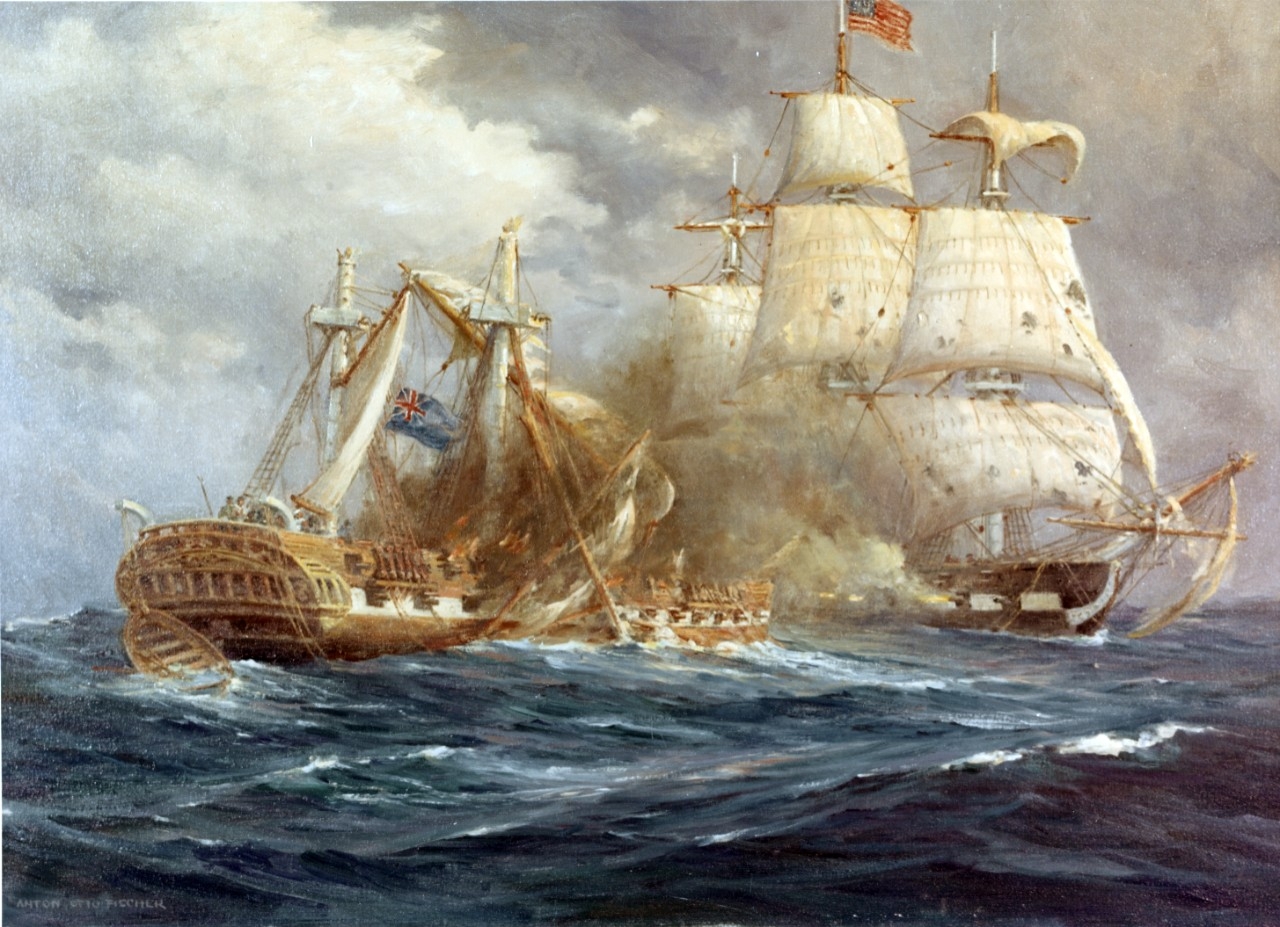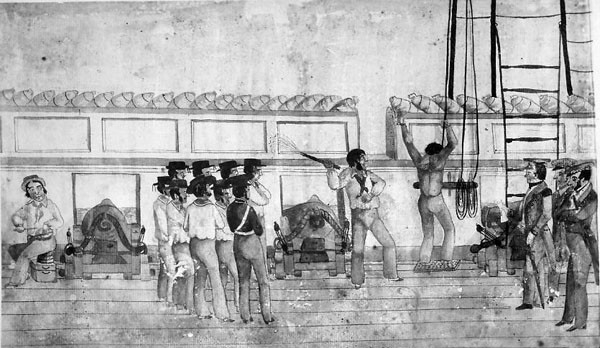Compiled by Brent Hunt, Naval History and Heritage Command’s Communication and Outreach Division
Olympia Set Sail to Bring Home Unknown Soldier—100 Years Ago
On Oct. 3, 1921, cruiser Olympia set sail from Philadelphia for Le Havre, France, to bring home the remains of the Unknown Soldier from World War I. She arrived on Oct. 24. The next day, as the casket was carried onboard, the ship’s band played the French and American National Anthems and Chopin’s “Funeral March.” The casket was secured to the aft gun platform of Olympia with a guard of Sailors standing watch. French Minister of Pensions André Maginot presented the Ordre national de la Légion d’honneur, which is the country’s highest military award, to the Unknown Soldier. After the ceremony was complete, destroyer Reuben James and six French destroyers escorted Olympia back stateside. Olympia arrived at the Washington Navy Yard on Nov. 9. Once dockside, the Navy turned over the responsibility of the Unknown Soldier to the Army. The Army escorted the casket to the Capitol Rotunda, where it would lie in state until Armistice Day, Nov. 11, 1921. On that day, the casket was transported to Arlington National Cemetery for the final interment.
U.S. Flag Hoisted Aboard Theodore Roosevelt, NATO Vowed Support in Wake of 9/11 Attacks
On Sept. 30, 2001, 20 years ago, the first American flag raised over the rubble of the World Trade Center in New York City was hoisted aboard USS Theodore Roosevelt. Shortly after, on Oct. 2, NATO Secretary-General Lord George Robertson announced that U.S. investigators had provided “clear and compelling” evidence of Osama bin Laden’s responsibility for the 9/11 terrorist attacks. Lord Robertson also said that this decision meant that NATO’s Article 5, which states that an attack on one member is an attack on all, is now “fully invoked.” Two days later, NATO approved specific U.S. requests for military and logistical support in the war against terrorism, reviewing evidence of Osama bin Laden’s involvement in the attacks on New York and Washington, DC. The support measures, to be taken “individually and collectively,” included the provision of NATO’s 17 Airborne Warning and Control System (AWACS) early warning aircraft as well as the deployment of ships from the alliance’s Standing Naval Force to the eastern Mediterranean.
The Truculent Turtle Broke Distance Record—75 Years Ago
On Sept. 29, 1946, Cmdrs. Thomas D. Davies, Eugene P. Rankin, Walter S. Reid, and Lt. Cmdr. Roy H. Tabeling manned The Truculent Turtle, a P2V-1 Neptune, during a 55-hour, 17-minute flight from Perth, Australia, to Columbus, OH. The plane arrived on Oct. 1 after a journey of 11,235 miles, breaking the world distance record for unrefueled flight. The record flight stood until 1962. The aircraft is currently on display at the National Naval Aviation Museum on Naval Air Station Pensacola, FL. For more naval aviation firsts, visit NHHC’s website.
National Disability Employment Awareness Month
Originally established after World War II had ended, National Disability Employment Awareness Month is celebrated annually in October. The theme for 2021 is “Don’t set limits on unlimited potential.” The awareness month is observed so Americans may reaffirm their commitment to ensuring equal opportunity for all citizens and pay tribute to the accomplishments of men and women with disabilities who contributed, continue to contribute, and wish to contribute to making the nation’s economy strong. National Disability Employment Awareness Month dates back to the return of servicemembers with disabilities from World War II looking for employment. In 1945, President Harry S. Truman, and Congress, in a joint resolution, established the first “National Employ the Physically Handicapped Week.” In 1988, Congress expanded the week to a month and changed the name to “National Disability Employment Awareness Month.”
The Navy’s Use of Carrier Pigeons
A new essay by NHHC’s Wendy Arevalo has recently been published to NHHC’s Exploration and Innovation pages. The Navy’s Use of Carrier Pigeons played a role in naval communications from the late 1880s through World War II. The U.S. Naval Academy in Annapolis, MD, was the first command in the Navy to breed and train carrier pigeons. A Naval Academy French professor, Henri Marion, built an experimental pigeon loft in an academy boathouse in 1891. He received the pigeons from the Army’s Signal Corps, which had built an experimental pigeon loft in Key West, FL, in 1888, but closed their program three years later. While with the Army, the birds had proven their ability to fly over water, routinely carrying messages from Havana, Cuba, back to their loft in Key West. Convinced that pigeons could improve naval communications at sea, Marion began training the birds on the Naval Academy school ship, Constellation. Academy pigeons were conditioned to fly from the ship back to their home loft at Annapolis. They were released from shorter distances at first, then the distance was gradually increased until they were flying up to 150 miles. For more, check out this page today. It contains a short history, imagery, and links to further reading.
The U.S. Navy Backed the Hunt for Titanic to “Drive the Soviets Crazy”
Robert Ballard, who is credited with the 1985 discovery of Titanic, revealed in his new book, Into the Deep, that he got much needed support in part because he convinced the Navy that finding the shipwreck would “drive the Soviets crazy.” The hunt for Titanic, which was really just the public face of the mission, was backed by the Navy for two reasons. The actual mission was to explore and take photos of USS Thresher and USS Scorpion that sank with all hands in 1963 and 1968 respectively. Ballard convinced the Navy his discovery would play into a game of psychological warfare with the Soviets during the later years of the Cold War. Vice Adm. Robert Thunman initially told Ballard his dream of finding Titanic was crazy, but he ultimately agreed to let the persistent explorer piggyback on the Navy mission and pursue the lost passenger ship using any time and funds that remained after looking into the two wrecks. “You can do whatever you want, but you gotta do it within the time and within the money, and that's it,” Ballard recalled Thunman saying. President Ronald Reagan and Secretary of the Navy John Lehman both supported the mission because they were eager to confront the Soviets more aggressively. Part of that included rattling them psychologically, specifically making them believe the UnitedS tates had capabilities beyond their own. “Given the highly classified nature of the mission, the Navy would only let me tell those with a need-to-know status what was really happening,” Ballard explained. “We told everyone we were testing equipment for the Navy.” For more on the secret mission and the discovery of Titanic, read the article.
United States, France Sign Agreement on CSS Alabama
On Oct. 3, 1989, the United States and France signed an agreement recognizing CSS Alabama as an important heritage resource for both nations and established a joint French-American Scientific Committee to oversee an archaeological investigation of the wreck. Ratification of the agreement established a precedent for international cooperation as it applies to archaeological research, as well as to the protection of unique historic shipwrecks. Sloop of war Kearsarge sank Alabama during a Civil War battle off the coast of Cherbourg, France, on June 19, 1864. French navy mine hunter Circe discovered a wreck 125 years later, off Cherbourg, and French navy Cmdr. Max Guerout later confirmed the wreck was Alabama. Through 1995, yearly archaeological investigations at the Alabama wreck site were conducted under the direction of Guerout.
Webpage of the Week
This week’s Webpage of the Week is one that has recently been revamped in NHHC’s notable ships section. Frigate Constitution— designed by Joshua Humphreys and built at Hartt's Shipyard in Boston, MA—was launched on Oct. 21, 1797. The ship was one of six frigates authorized by Congress with passage of the Naval Act of 1794. Constitution was constructed with timbers from Maine to Georgia, as well as copper bolts and spikes supplied by Paul Revere. Over the course of her illustrious career, Constitution participated in the Quasi-War with France, the Barbary Wars, and notably the War of 1812. On Aug. 19, 1812, Constitution sighted the powerful British frigate Guerriere while cruising off the Gulf of St. Lawrence. As the ships drew nearer, Guerriere opened fire on Constitution. However, the round shot either fell harmlessly into the ocean or glanced off the ship. Capt. Isaac Hull, Constitution’s commander, subsequently gave the order to fire on the British ship, ultimately destroying Guerriere's mizzen mast, damaging her foremast, and cutting away most of her rigging. Both crews tried to board each other’s ships, but heavy seas prevented it. As the ships began to separate, Guerriere desperately fired point-blank into the cabin of Constitution, but the fires were quickly extinguished. Guerriere was dead in the water. The British ship struck her flag and the crew of Constitution boarded the ship, but she was in such bad condition that she was burned and the crew were taken as prisoners. It was a dramatic victory for the young American Navy and Constitution. For more on one of history’s greatest fighting ships, check out the page today. It contains a short history, suggested reading, art exhibits, selected imagery, and much more.
Today in Naval History
On Sept. 28, 1850, flogging on Navy and merchant marine ships was abolished by an appropriation bill by Congress that President Millard Fillmore signed into law. Warnings against the excessive use of flogging were written as early as 1797 by Capt. Thomas Truxtun and in 1808 by Surgeon Edward Cutbush. A proposal to abolish flogging was first introduced to Congress in 1820 by Representative Samuel Foot, but it was unsuccessful. In March 1850, Herman Melville's novel, White-Jacket, or The World in a Man-of-War was published, and it contained a chapter on flogging,its evil effects, and unlawful use. Melville called for its abolition. Some naval officers took exception to Melville's remarks and wrote rebuttals, a few of which were published in newspapers or pamphlets. After its abolishment, some officers and civilians wanted flogging restored. However, the effort was decisively defeated after a speech in the Senate in 1851 by Sen. Robert F. Stockton of New Jersey, a former Navy captain. Naval officers had to adjust to new conditions, and there was increased pressure on Congress to enact new regulations. In March 1855, Congress passed legislation for more efficient discipline in the Navy, which established a system of summary courts- martial for minor offenses.
For more dates in naval history, including your selected span of dates, see Year at a Glance at NHHC’s website. Be sure to check this page regularly, as content is updated frequently.

